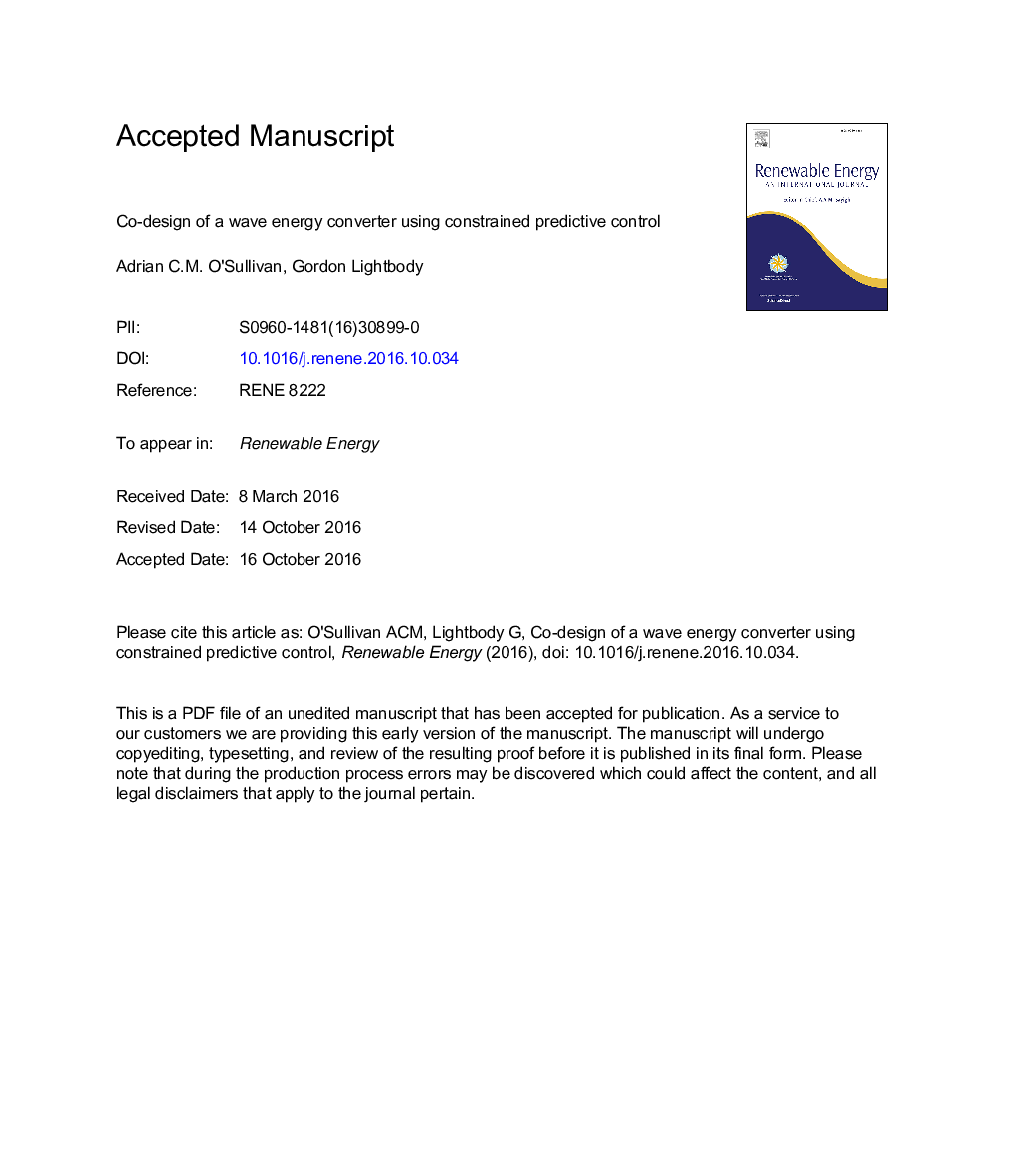| Article ID | Journal | Published Year | Pages | File Type |
|---|---|---|---|---|
| 4926813 | Renewable Energy | 2017 | 37 Pages |
Abstract
This paper highlights the need to optimise the performance of the complete wave to wire system, instead of designing the individual subsystems. In this work a point absorber wave energy converter operating in heave mode separately, coupled to a Linear Permanent Magnet Generator (LPMG); where the results are obtained in simulation. The PTO force is controlled by a machine side back-to-back voltage source converter (VSC), which is connected to a constant DC-link voltage. Model Predictive Control (MPC) is then used to maximise the absorbed electrical power with the resistive losses of the PTO included; this is compared with classical control methods. The optimal force produced from the MPC incorporates legitimate physical and electrical constraints of the WEC and LPMG -the importance of including such constraints within the optimisation is shown. Field weakening and a uni-directional power flow constraint are then incorporated to help prevent poor grid power quality when fluctuations in the DC-link occur. It is assumed that the constrained optimal control approach produces the highest possible electrical power available. This means that it is now possible to clearly see the effect of physical design choices on the performance on a level playing field.
Keywords
Related Topics
Physical Sciences and Engineering
Energy
Renewable Energy, Sustainability and the Environment
Authors
Adrian C.M. O'Sullivan, Gordon Lightbody,
